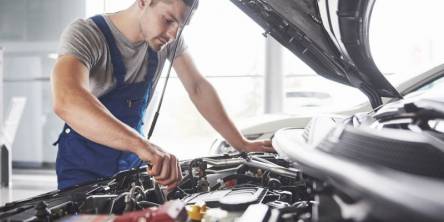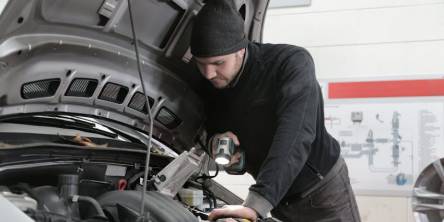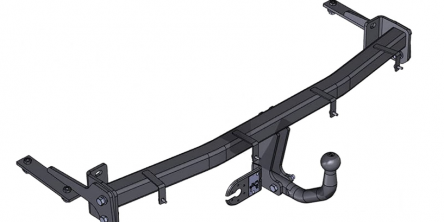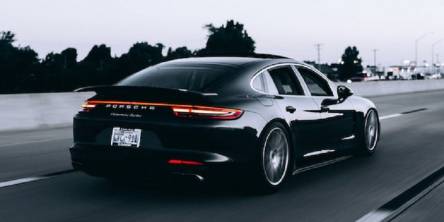Technological Advancements in Automatic & Manual Transmissions
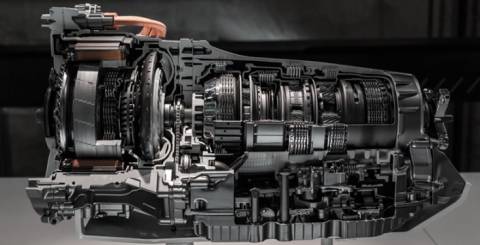
The ingenious of the human race keeps inventing new ways of making life easier and more sustainable. As such, the world has had many innovations – from telecommunication, food production, health to each part of human existence.
One of the significant innovations in the motor industry is the constant improvement of motor transmission.
How Are Modern Transmissions Different?
Innovators have made better transmission in terms of:
● Creative fuel-saving mechanisms
● Better convenience
● Speed
● Acceleration abilities
● Lower cost of creating and installing transmission
● More durable transmission
● Ease of repair, rebuilding, or remanufacturing
● Environmental sustainability of the transmission
Below is a list of the most recent Technological Advancement in the vehicle transmission field:
Continuously Variable Transmission (CVT)
Continuously Variable Transmission (CVT) has its origins in the 1879 variable speed transmission created by Milton Reeves for his sawmills. The transmission has since moved from lumbering to cruising vehicles on our roads, power generators, farm equipment, among other uses.
In modern vehicles, CVT has two pulleys that connect the engine and the wheels using a flexible belt. The two pulleys change depending on the vehicle's power needs. The transmission can detect the resistance the car is experiencing and automatically adjust the power output.
Continuously Variable Transmission construction model allows it to have an infinite number of gear ratios. The endless number of gear ratios enables the vehicle to perform optimally regardless of the engine's speed.
Other reasons this CVT is preferred are its relatively lower fuel consumption; it offers a smoother ride - especially when driving long distances, and is convenient for the driver.
Automated Manual Transmission (AMT)
The Semi-automated Transmission, as the AMT is sometimes called, is an improved version of the manual transmission. The Automated Manual transmission, however, does not have a clutch or shift gears. In place of the two traditional methods, an AMT utilizes sensors and actuators to convert electrical gestures into mechanical signals.
However, the driver can push the gear shaft forward– to get upshift or back – to get downshift. Cars with automated manual automation, therefore, only have fuel and a brake pedal.
The gear patterns of the semi-automated transmission are programmed into a computer system. The computer program is then linked to the car's Engine Control System (ECU). The system can detect the car's need to change gears and instruct the actuators to play the clutch and gears' role.
The automated manual transmission gives users the benefits of automatic transmission while at the same time offering the driver the joys of driving cars with manual transmission. AMT is also more fuel-efficient compared to a manual transmission.
Conventional Automated Transmission
Conventional Automated Transmission work with a carefully managed oil pressure in the gearbox. The transmission senses the car speed and automatically switches to the appropriate gear – alternating from the lowest to the highest gear.
AT uses two planetary gear sets. The planetary set has three gears, with the centermost representing the sun and the other two rotate around it. The system is made so that when one part of the setup is blocked, the other part still operates. This means that users can change gears without having to engage the clutch.
Automatic transmission offers users a relatively fast transmission, has a high torque capacity, and can comfortably change gears.
Infinitely Variable Transmission (IVT)
IVT is an improvement of the Continuously Variable Transmission (CVT). Infinitely Variable Transmission relies on the driver's input and the external conditions to gauge the pressure to insert into the transmission pulley system. The IVT has a wide-ratio pulley system, which gives users a wide ratio of operation.
The Infinitely Variable Transmission also has an improved chain belt – as opposed to the traditional push belt. The IVT comes with a gear stick, and it gives the driver the feeling of driving the old good manual transmission vehicles.
The IVT provides a more advanced fuel-saving mechanism, is more responsive, and gives drivers a better driving experience.
Electric Transmission
Electric transmission is propulsion that converts engine energy to electric energy. The electric transmission does not require a gearbox since it uses electrical power to move vehicles. One of the most common applications of electric transmission is hybrid vehicles that use rechargeable batteries.
Vehicles that have electric transmission afford users a smoother acceleration and are energy efficient. On the downside, though, the electric transmission is relatively expensive to build and install.
Hydrostatic Transmission
Hydrostatic Transmission works using the principles of hydraulic systems. The transmission has two hydraulic setups that work together to convert hydraulic fluid into energy. The first system is a variable displacement, while the other is a motor.
Like most infinitely variable transmission, hydrostatic transmission does not require a clutch. The transmission can achieve a continuous ratio from the lowest to the highest. When the roles of the two hydraulic systems are exchanged, the hydrostatic torque direction is reversed.
Hydrostatic transmissions are easy to make and install and are flexible to use. They are also compact and are highly efficient. They, however, are noisy and are more preferred for heavy vehicles as opposed to cars.
6T45 transmission
The 6T45 is an advanced 6-speed automatic transmission. General Motors manufactures this six-speed transmission, and it marked the start of clutch-to-clutch shifting, as opposed to the traditional one-way clutch. The 6T45 transmission was highly innovative upon its initial introduction, however; Over the years it became increasingly apparent that the first generation of 6T45 transmissions had problems. If you have a vehicle that has the 6T45 and needs a transmission replacement, browse used 6T45 transmissions or a remanufactured 6T45 transmission at https://reman-transmission.com/.
The Future Looks Even More Promising
If the current technological advancement in the transmission industry is anything to go by, the future will see more breathtaking transmission that is environmentally sustainable and affordable.
If you found this article helpful and also have a ford vehicle, this article may be a good read for you here.
Similar Articles
In the world of automotive repair, having the right tools can make the difference between a smooth, efficient job and a time-consuming struggle. One essential tool, especially for working on suspension components, is the ball joint press.
Discover 5 key benefits of a Rivian R1S roof rack, from maximizing storage space to enhancing safety, theft protection, and adding versatile cargo options.
Explore the pivotal role of digital transformation in the automotive industry, from evolving customer journeys and leveraging data analytics to enhancing online reputation and sales processes.
Master visitor parking control with effective strategies, clear policies, and technology solutions to ensure smooth access and a positive experience for all.
Explore the world of custom cruisers with unique three-wheel bicycle designs. Discover innovative styles and features in this detailed look.
Have you ever heard of a VIN, or Vehicle Identification Number? It might look like a meaningless string of characters at first glance, but this unique code holds the secrets to a vehicle's past and present.
When it comes to heavy towing, you must ensure that you use the right equipment for the job. Your choice of a pickup truck, trailer, and hitch is vital to ensuring safe and proper towing.
If you are an owner of a vehicle, then you must need to know somethings about it. Let's go...
Jeep is one of the most iconic car brands out there. From the Wrangler to the Cherokee to the recently revitalized Wagoneer, Jeep has a deep lineup of desirable automobiles

